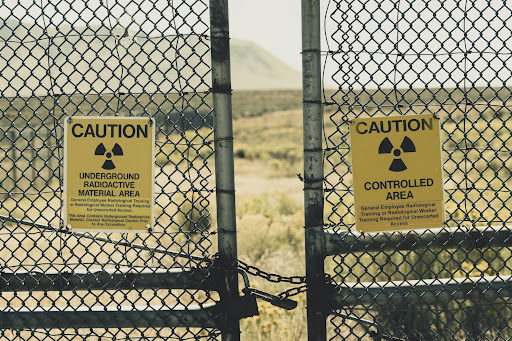Over the years, the term “survival skills” has lost its impact. Tell someone you enjoy learning it, and people immediately think you’re a doomsday fetishist who loves preparing for society’s collapse. However, some of these skills can take just fifteen minutes to learn and can potentially save your life.
We aren’t talking about knowing how to build a fire or how to make a shelter. Instead, we will focus on how to identify toxic substances in your environment.
According to data from the World Health Organization, close to 200,000 people die every year from unintentional poisoning. In that regard, being able to identify at least some of the more common health hazards is a must-have skill. Here are some signs to watch out for:
1. Gasses in Unused Wells and Other Enclosed Spaces
There are a number of adventurous people that like to enter water tanks, climb down wells, and explore caves. These seem like innocuous activities, but they often turn tragic as people forget about the presence of deadly, invisible gasses.
Enclosed spaces like wells and caves often host microbial activity through which gasses like methane and hydrogen sulfide are released. The confined environment and lack of air circulation prevent these gasses from dispersing naturally.
Similarly, gasses in caves can be toxic due to a combination of natural processes, geological factors, and human activities.
Carbon dioxide is a common and naturally occurring gas that is exhaled by goa escorts service living beings and produced by geological processes. However, in caves, high levels of carbon dioxide can accumulate in enclosed spaces, especially in low-lying areas with poor circulation.
Venturing to such areas and breathing the excessive carbon dioxide can cause headaches, dizziness, confusion, and, in severe cases, suffocation.
The most reliable way to identify the presence of toxic gasses is by using gas detection equipment. These devices can measure gas concentrations in real-time and provide audible or visual alarms when dangerous levels are detected.
You are almost always going to want such equipment. This is because many of the gasses can be odorless and invisible. That said, gasses like hydrogen sulfide have an instantly recognizable ‘rotten egg smell.’ High concentrations of this gas can cause respiratory irritation, nausea, and even lethal poisoning write for us technology.
2. PFAS and Their Omnipresent Nature
Some of the most dangerous chemicals to look out for are the PFAS kind. These stand for per-and poly-fluoroalkyl substances that have a track record of causing serious health problems like cancer.
PFAS are found in a wide range of products and materials, including non-stick cookware, waterproof clothing, firefighting foam, and more. Their widespread use contributes to their ever-present nature in our daily lives.
These chemicals are also responsible for the controversial firefighting foam cancer that many first responders suffer from.
According to TorHoerman Law, these chemicals are often found in Aqueous Film Forming Foam (AFFF) fire extinguishers. Exposure to this foam has been linked to several types of cancers. Thankfully, many stations are moving away from extinguishers that use AFFF.
Identifying PFAS chemicals can be challenging as they tend to be present in soil, water, and the aforementioned items. Without proper testing equipment, you cannot be 100% sure about the presence of PFAS chemicals.
Experts are aware of this challenge and are trying to come up with new solutions. One such individual is Nathan Kilah, a senior lecturer in Chemistry at the University of Tasmania.
Kilah hopes to create a color change test that the average person can use. Such simple tests can be a game changer in identifying deadly PFAS chemicals.
3. Arsenic
Arsenic is an element that’s found in the Earth’s crust and tends to be widely distributed in the environment. Arsenic is considered a metalloid, which means it has properties of both metals and nonmetals. This element exists in various forms, including inorganic and organic compounds.
Inorganic arsenic compounds are more toxic and have been associated with adverse health effects. On the other hand, organic arsenic compounds are generally less toxic and are often found in seafood.
This element has both industrial and natural sources and has been used for various purposes throughout history. However, due to its toxicity, exposure to high levels of arsenic can be harmful to human health.
Arsenic poisoning can occur through ingestion, inhalation, or skin contact. This means there are several ways you can accidentally be exposed to it.
On its own, it is odorless and tasteless, but some arsenic-containing compounds can impart a garlic-like odor to water. Does your water source have a reddish-brown color, or does your soil exhibit unusual discoloration? If so, it could be a signal of potential contamination.
In some cases, plants in areas where soil is contaminated with arsenic may exhibit stunted growth, discoloration, or other abnormalities. While this method is not foolproof and can be influenced by other factors, it can serve as a general indicator.
Key Takeaways
Learning about toxic substances can be a valuable skill if you ever come across hazardous environments.
Even seasoned professionals, armed with knowledge and experience, are not immune to the dangers that toxic substances can present. The tragic truth is that a single lapse in judgment or an underestimation of risks can lead to catastrophic consequences.
Thus, don’t try to be a hero. Keep educating yourself and avoid any toxic substances that you come across out there.




